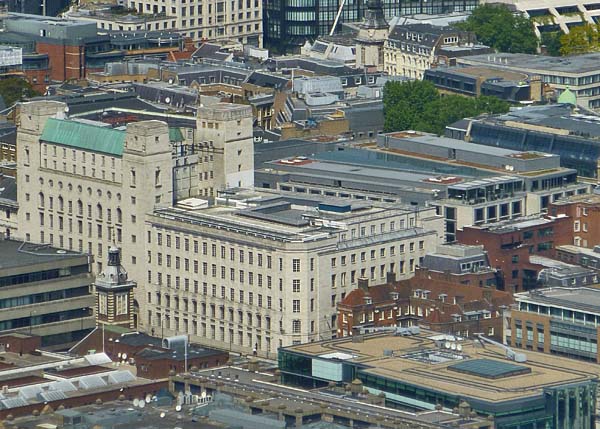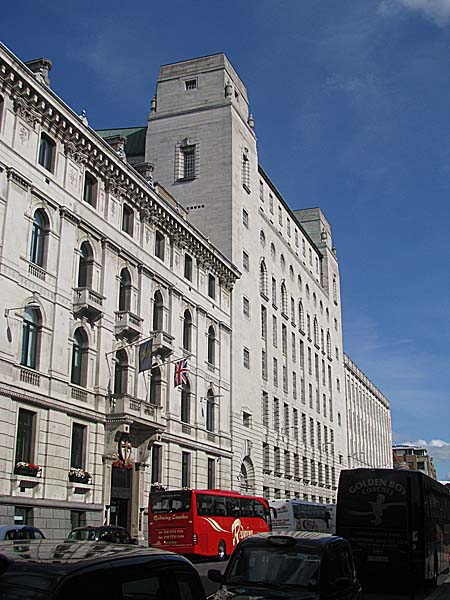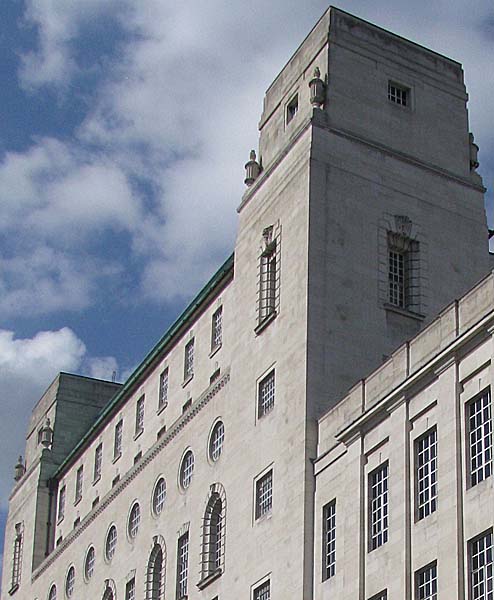The Faraday
Building is in fact two buildings. The
lower block, closest to the camera, is a
former Post Office Sorting Office built in
1890. In 1905, it was converted into a
telephone exchange. In the early 1930s
the adjoining taller block was added to house
the world's first International Telephone
Exchange. It had 6,000 lines and for a
period of time virtually all of the World's
international telephone traffic was routed
through the Faraday Building. Despite
the fact that the name Faraday Building is
emblazoned above the entrance, this 1930s
section of the site is also referred to as
Faraday House.
Apart from the rather discrete BT sign beside
the entrance there are a number of clues to
the building's function. To begin with,
incorporated into the name over the door is
the caduceus (staff with wings above two
coiled snakes) of Mercury, the messenger of
the Gods. Mercury himself is carved into
the keystone above the fanlight.
Then, above the second floor windows you will
find keystones carved with items related to
telecommunications including a telephone,
switching equipment and cables.
When it was built, Faraday House was a very
controversial building because its height
meant that it obscured the view of St. Paul's
from the river.

It resulted in the introduction of by-laws
that restricted the height of new buildings so
as to protect sight-lines around the iconic
cathedral. As a result it was nearly 40
years before a building was erected in The
City that was higher than St. Paul's.
According to the sign beside the entrance
door, the Faraday Building occupies a site
that was once home to the "Doctors
Commons".
The doctors in question were not medical
doctors but "doctors" of law. The
Doctors Commons was a society of lawyers that
was founded in the 16th Century. The
society occupied a building here that
apparently housed Admiralty, Probate and
Ecclesiastical Courts. By the time the
19th Century rolled around, the Doctors
Commons was generally regarded as old
fashioned and the target of ridicule handed
out by writers including Charles
Dickens. The society held its last
meeting in 1865 and that same year their
building was sold. It was demolished in
1867.









